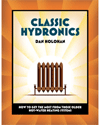
The Internet can be both a blessing and a curse. There is an entire new language that we use when dealing with the Internet. One such new expression is, “going viral.” Going viral can be a good thing or a bad thing.
One plumbing-oriented subject that went viral last month was a report from Johns Hopkins University regarding the use of automatic faucets in hospitals. Before the Johns Hopkins researchers even delivered their findings, the reports traveled around the world. If you missed it, basically, the researchers recommended removing automatic faucets in any health-care facility.
The reason given was a study they conducted on automatic and manual faucets in Hopkins Hospital. The study finds that 50% of the automatic faucets had Legionella bacteria compared to only 15% of the manual faucets. The study also shows manual faucets have half the amount of bacteria in the weekly cultures as compared to the automatic faucets.
The study indicates the switch to automatic faucets cuts water use by a quarter compared to manual faucets. That’s not surprising. It’s one of the beauties of automatic faucets.
The researchers conclude that the use of less water was one of the possible reasons the automatic faucets had a higher percentage of Legionella bacteria present. The report indicates uncertainty as to why high bacteria counts were present in the automatic faucets, but notes the use of more water helps to flush out the bacteria.
Before you get too excited, DO NOT start removing automatic faucets from any health care facility. I don’t care if the report comes from Johns Hopkins. They jump to conclusions without even knowing the reasons.
Plus, they will find the newer manual faucets will probably have more bacteria than the automatic faucets.
Here Are The Facts
First, Legionella originates from the public water supply. The faucets didn’t put it in there. You can drink water with Legionella all day. The only concern with Legionella is when it becomes airborne. When you breathe the bacteria, that’s when you get Legionnaires’ disease.For many years in the plumbing engineering profession, it’s been recommended to use laminar flow aerators in health-care facilities. They keep Legionella bacteria from becoming airborne. That is still a good recommendation.
One study shows Legionella is in every showerhead of a hospital. This becomes more troubling since it will easily become airborne when you start the shower. However, there are ways to combat Legionella growing in the remaining water in a showerhead.
The biggest reason for switching hospital faucets to automatic faucets was to avoid touching the surface of a faucet. One of the greatest transfer sources of bacteria has been from touching any surface in a bathroom. To combat the growth of bacteria on various surfaces, manufacturers can now treat the surface with antimicrobial material. The primary component of antimicrobial materials is silver.
Remember the expression, “Born with a silver spoon in his mouth”? That expression indicates someone was born into a wealthy family. However, the expression comes from the Dark Ages when richer children sucked on a silver spoon to ward off the plague. It worked because of the wonderful qualities of silver. They really did need the silver spoon.
One option for Johns Hopkins is to have manual faucet handles that are antimicrobial. However, I believe automatic faucets are still better.
Get The Lead Out
What the researchers failed to understand is the change that has occurred in the last few years regarding the inside components of a faucet. The battle cry that faucet manufacturers have been hearing has been, “Get the lead out!” That is what they have been doing.The lead, of course, is in the brass. One of the major components of brass is copper. What we often forget is how good copper is as an antimicrobial material. Yes, silver is one of the best, but copper isn’t far behind. Brass also is an antimicrobial material, mainly because of the copper in the brass. The copper and brass surfaces do not allow the growth of bacteria. Furthermore, the surfaces will kill certain bacteria.
As we take the brass out of the waterway in a faucet, you have some unintended consequences. One of those is you lose the antimicrobial benefits of the brass waterways.
Most of the newer automatic faucets have very small amounts of brass, if any, in the waterway. Again, the manufacturers are getting the lead out. The same is true for manual faucets, hence my comment that they will most likely see higher concentrations of bacteria in new manual faucets, as well as on the handle surfaces.
Now, Johns Hopkins is saying they want the antimicrobial benefits back in the waterway. This is one of those situations where you can’t have your cake and eat it too. We are getting the lead, brass and copper out of faucet waterways, and we are losing the antimicrobial benefits of the material. But, we are getting the lead out. The result is we have surfaces more readily susceptible to the breeding of bacteria.
Keep It Automatic
In a perfect world, the removal of brass from the waterways shouldn’t be a problem. Bacteria is not supposed to be in water. However, in hospitals, bacteria is everywhere. As a doctor friend of mine always says: “The last place you want to be when you are sick is in the hospital. The hospital is filled with disease and bacteria.” Think about that.Automatic faucets should still be the top choice for hospitals and health-care facilities. The aerators on faucets in health-care facilities should be laminar flow aerators. The Johns Hopkins report jumps to conclusions without looking at the actual cause of the results they found. At best, the report is inconclusive. At worst, it is a viral message that has done significant damage to the good name of automatic faucets.
I would hope that no plumbing engineer makes a change in his or her specifications based on this report. The study has proven nothing to date. As many researchers state, “More research is necessary.”
In this case, that statement is completely accurate.




